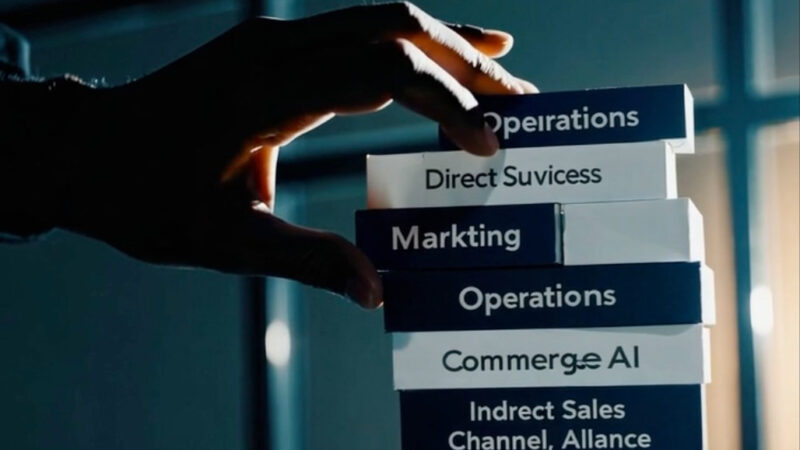Professional Services at an AI Company
Professional Services at Conversica (The Wins)
I had committed to 5 years, and even though I didn’t envision it taking as long as it did, we finally achieved most of what we originally set out to accomplish back in October 2019.
Back in 2019, Professional Services (PS) at Conversica was more than just underdeveloped—it was intentionally avoided. The team took pride in “not needing services,” a holdover from a previous administration that viewed PS as a cost center, a crutch, even an evil—something that signaled product failure or customer dependency.
From day one, I saw it differently. To me, PS wasn’t a sign of weakness—it was a strategic asset. A path to adoption, a driver of expansion, and a lever for retention. It was how we could turn product promise into realized value, faster and more predictably. But it requires a significant investment. How can you avoid making huge investments in PS? You can enable a partner network of consulting firms to become your PS organization.
We restructured the team with clear functional swimlanes: Implementation Services, ROI Achievement Services, Consultative AI Services, and Customer Enablement, for example. We introduced delivery templates and standardized onboarding cadences tied to vertical-specific use cases. And we moved away from time-and-materials or hourly billing to outcome-driven packages—faster time-to-value, better NPS.
We were creative, but didn’t realize the holly grail – that being when PS becomes a flywheel because you embed AI into the delivery process itself. For example, use agents to handle pre-engagement assessments, configure AI use cases, and even train users on real-world conversations. The PS team, then in turn, can focus on exception handling, tuning, and ROI coaching. This was my painted picture.
That being said, we managed to turn PS into a listening post. Implementation friction? Feature gaps? Integration pains? PS surfaced them within weeks—not quarters—helping Product and GTM pivot with precision. In several cases, insights from PS led directly to new packaged offerings and roadmap reprioritizations. If structured right, PS can drive product roadmap as much or more than the customers themselves.
In the end, PS evolved from a cost-center to revenue enabler—in our case, key to our High-Value Use Case (HVUC) migration strategy, critical to our “Protect the Base” initiative, and instrumental in net revenue retention gains.
Professional Services – Strategic Headwinds (The Losses)
But the path wasn’t linear.
We Underinvested in Expertise
The most critical miss: we didn’t invest deeply enough in developing domain-specific expertise. As our customers grew more sophisticated in how they applied our AI—across marketing, sales, and customer success—they sometimes understood our product’s business application better than we did. That gap limited our ability to lead, consult, and proactively expand their use of Conversica. PS should have been the customer’s most trusted advisor—not just their implementation team.
Scaling Expertise, Not Just Headcount
As our platform matured—with AI orchestration, multi-touch workflows, and deeper integrations—we scaled staff, but not always capability. The demand for vertical-specific consulting outpaced our enablement. This led to variability in delivery quality, particularly on complex enterprise implementations.
Blurred Boundaries with CS and TS
Much like TS, PS often absorbed responsibilities that weren’t theirs—custom configurations, product workarounds, and even advanced performance analysis. The absence of clear swimlanes between PS, CS, and TS diluted focus, led to resourcing strain, and confused customers.
Global Expansion Without Global Readiness
We expanded from North America into EMEA, LATAM, and even APAC. But our services infrastructure didn’t scale at the same rate. Regional gaps in language support, time zones, and compliance awareness created inconsistent experiences. The ambition was right; the operational readiness lagged.
Undervalued Internally
For too long, PS was viewed as an afterthought—overhead rather than an enabler. It wasn’t until we tied PS metrics to renewal impact, usage growth, and expansion ARR that the organization began to fully appreciate its strategic weight.
Advice From One CEO to Another – Building PS for AI-Driven Enterprises
Design for Outcomes, Not Hours
Move from time-based contracts to milestone-based ones. Align around business outcomes and time-to-value. Customers don’t care how hard you work—they care when they can launch.
Embed AI Into Delivery
If you’re selling automation, you better use it. Internal adoption of your own AI accelerates delivery, showcases product maturity, and builds internal credibility.
Specialize Early
Verticals matter. Use cases matter. A one-size-fits-all PS team will always under-deliver. Build repeatable delivery playbooks by vertical and certify your team around them.
Make PS Part of Product
PS is your real-world lab. Ensure weekly feedback loops exist between PS and Product to evolve what you build based on what your customers struggle with.
Don’t Hide PS Behind CS
PS is not just a cost to control—it’s a value to showcase. Use it as a competitive differentiator in deals. Feature PS stories in GTM materials.
Conclusion
By 2025, Conversica’s Professional Services wasn’t a bolt-on—it was a bridge. A bridge between promise and product, between purchase and renewal. It matured from reactive deployments to proactive value realization. It wasn’t just about getting customers live—it was about getting them loyal.
Professional Services at Conversica wasn’t where the journey ended—it was where it began. We didn’t just launch software—we launched belief. One customer at a time.
Strategy isn’t built in slides. It’s forged in hard conversations, late-night pivots, and the messy middle of execution. Every bold move we made as a company lived or died by the strength of our executive team. What follows isn’t just my perspective—it’s the collective experience of those who were in the trenches. The functional leaders who owned the inflection points. Who navigated the trials, learned from the misfires, and helped turn strategy into motion. This is what transformation really looks like—function by function, leader by leader, decision by decision.
- Executive Team Management
- Direct Sales
- Indirect Sales / Channel / Alliances
- Marketing
- Customer Success Management
- Technical / Customer Support
- Professional Services
- Product Management
- R&D
- Cloud Operations / DevSecOps
- Legal / Security / Compliance
- HR / People
- Finance
- International Operations
- Corporate Development
- Board Management



